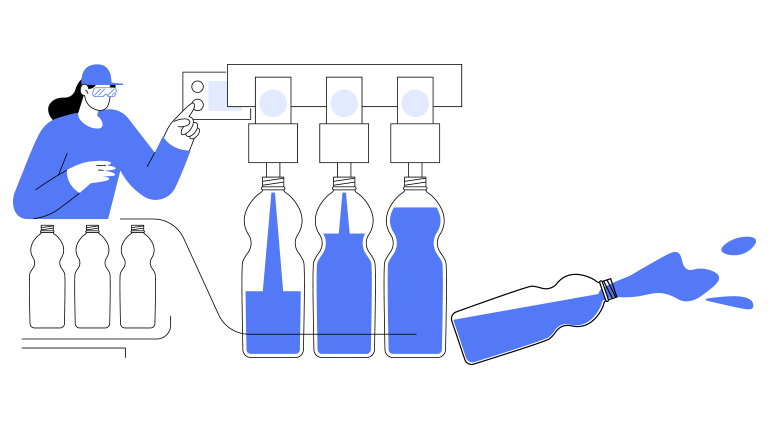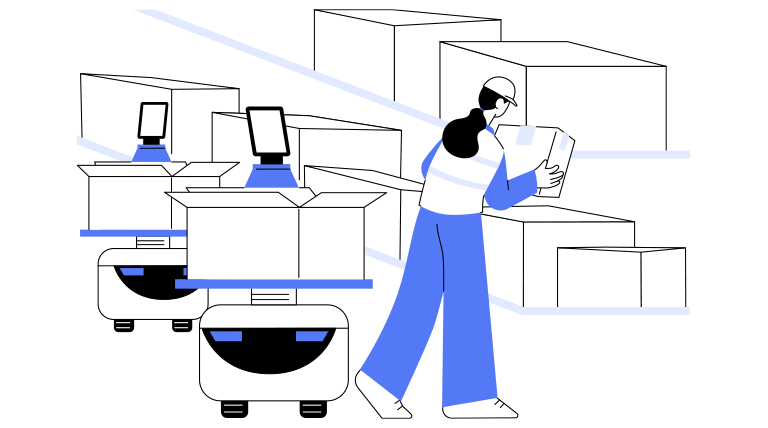How to Prevent Critical Investments from Failing
Investing in employees’ capabilities yields returns across a spectrum of operational outcomes
- 93% of companies think adopting new technology, like intelligent devices, to improve work outcomes and team performance is important to their organization’s success.
- Investments – from new machinery to software to consulting engagements – often fail or underperform expectations because not enough thought or investment is made to support employee adoption.
- Equipment and automation alone cannot meet company efficiency/productivity goals.
- Reskilling or upskilling are a necessary means for companies to improve team capabilities alongside the rapid digitalization of the workplace.
- Automation isn’t replacing people altogether. It’s freeing up employees to do higher level work.
- Investing in continuous learning and making it part of daily tasks can reduce the impact of talent shortages and skills gaps.

An independent beverage bottler couldn’t keep up with production because it didn’t have enough capacity to meet customer demand. So, the company made a strategic investment in a new filling machine that would increase production speed and become the company’s fastest line in North America.
The machine cost the company several million dollars. But even factoring in maintenance costs, depreciation, and time to profitability, the increase in production made sense.
After the machine was installed, the operators were taught how to use it. Well… they were trained one time by the experts who set up the machine. Nobody captured any of the training details and no work instructions were provided. Shortly after the operators were trained, the company experienced a lot of turnover.
With no documentation to train new hires and no reaction plans for operators, when the machine began spitting out error codes, downtime increased excessively. Instead of minutes, the machine would be down for a day. When the machine had calibration issues, employees would start pushing buttons only to end up creating more problems. The machine would have to be shut down until someone with the right skills could come to address the problem. The operators didn’t have tools or resources to effectively address problems as they arose.
What was supposed to increase production capacity ended up creating more capacity problems. Productivity decreased and excessive equipment downtime caused product quality to suffer.
This is a true story. It happened because, while planning their initial investment, the company thought through every variable except for one critical component – their people.

Reskilling and Upskilling: Solutions to the Problem
Investments – from new machinery to software to consulting engagements – often fail or underperform expectations. They fail not because they aren’t needed, but because not enough thought or investment is made to support employee adoption.
Properly training teams on any new tool is vital. Anything a company buys to solve a problem or to meet goals must make sense to the people who will make it operational. This is why 57% of supply chain executives report hiring and retaining qualified workers as 2023’s greatest challenge: equipment and automation alone cannot shoulder the extent of work needed.1
For the foreseeable future, supporting employees and building their capabilities will be what yields returns across a spectrum of operational outcomes.
In 2021, the World Economic Forum report warned that over half of all employees worldwide would need to reskill or upskill by 2025. That’s next year. The report foresaw reskilling or upskilling as a necessary means for companies to stay ahead of competition and have the workforce talent needed to manage rapid digitalization of the workplace.2
Not only has that prediction proven true, it’s been compounded by the labor shortage.3 Even as Industry 4.0 becomes a reality, companies are struggling to fill entry-level roles, much less the skilled jobs required to adopt robotics, connected machines, and the role of generative AI.
PwC says the need to upskill, and reskill, the workforce has never been more urgent. An aging population and rapidly evolving technological skills gaps have become the norm. A range of industries from manufacturing to retail and health services are still trying to deal with the effects.1
Many companies are deploying automation to take over simple, routine tasks. But automation isn’t replacing people altogether. Rather, it’s freeing employees to do higher level work.

Replacing existing employees with more highly skilled workers isn’t really an option anymore. It’s too costly and there simply aren’t enough people to meet the need.
To be successful, many are realizing the need to retrain their existing workforces. With the right tools, you can provide your team with the support they need to master new skills faster and reduce their time to proficiency.
- 93% of companies think adopting new technology, like intelligent devices, to improve work outcomes and team performance is important to their organization’s success.
- However, only 22% say their organization is ready to do so.4
Without supporting the skills development of your human capital alongside technological investments, both suffer. Talent is a barrier to innovative technologies without skills development but beneficial with it. Training and developing your employees’ skills will help them retain good jobs and ensure your company has the skilled talent you need.1

How to Get the Most Out of Your Training Investment
While the US alone spent more than $100 billion on training in 2022, recent studies show only 12% of learners say they apply the skills from the training they receive to their work.5
Employees are more likely to quickly forget what they learn when it’s not applied to everyday tasks. If information isn’t applied, the majority of what was learned will be lost within six days.5 But forgetfulness greatly decreases when time is spent each day to remember information.6 Task lists, digital work instructions, and on-the-job training are great ways to help your employees retain what they learn.
That’s why the way you train is important. You don’t want to hinder your own efforts by ignoring how your employees actually learn. Some L&D efforts focus on the wrong metrics, like credits earned by employees, rather than the actual business impact of the training.5
Similar to your business processes, training and learning can be continuously improved. Are you using training courses? Turn them into real life experience instead. Put task lists in the hands of your employees to help them apply new learnings to their everyday work. Making information easily accessible during their daily activities helps your employees apply their knowledge to create value, not check a “feel good” box.5
Then, empower your frontline employees to provide feedback on content. Those closest to the work know it the best. People tend to discover ways to improve a process after doing it multiple times. If your employees notice a better way to do something or identify an error in the process, make it easy to provide feedback and encourage it! Help everyone continuously improve.
As you identify current and desired skills in your company, you can organize them into job role requirements and create paths for your employees to learn them. Creating visibility into skills and career paths can improve the effectiveness of your upskilling and reskilling programs and help employees see the long-term vision.3 You’ll benefit both from a more versatile team, and better retention among individual team members.

Reducing the Impact of Talent Shortages with the Right Tools
Investing in continuous learning and making it a habit can reduce the impact of talent shortages and skills gaps. When one of our clients first came to us, they faced an alarming potential skills gap because many of their team members with 30+ years of experience were beginning to retire.
The client is a manufacturer of consumer goods with a highly sophisticated, automated facility. They had an enviable retention rate and highly skilled maintenance technicians and electricians who keep the plant running smoothly.
Because the company hadn’t previously experienced much turnover, their training program wasn’t designed for a large influx of new people just beginning their careers. Before Acadia, their training consisted of splitting time between reviewing manuals in the facility’s library and shadowing technicians on the floor.
The library was entirely paper-based and required technicians to leave the floor, and stop what they were doing, in search of information. The shoulder-to-shoulder training was also cumbersome. Without work instructions or job aids, technicians had to wait until a machine broke down to learn how to fix it. None of this met their urgent need to replace retiring team members. In fact, it took over a year for new hires to become proficient.
With Acadia, they’ve transformed their paper-based system into a dynamic knowledge repository where the entire workforce can find the information they need, the moment they need it.
They now have a structured onboarding path with step-by-step, on-the-job training for technicians that enables new hires to work more independently. Employees can access digital SOPs with videos and other job aids right on the plant floor without having to interrupt productivity.
Acadia is also used to set up training paths to teach team members the skills they need. And rather than waiting for a machine to break down, they can create procedures in Acadia that help guide them through the protocols instead. Trainers have drastically reduced the time it takes to onboard new technicians and make them an intermediate user requiring no assistance.
It used to take 500+ days for new hires to become proficient. With Acadia, they’ve reduced it to 125! That’s a 77% improvement.
Getting Started
Reskilling or upskilling your people is vital to filling the skills gaps you already have. Don’t invest in innovation and automation without also investing time and training into your human capital. Leaving your employees struggling with old-fashioned or inappropriate tools only leads to consistently poor results – if not worse. Invest in your people and you’ll see returns for years to come.
If you’re wondering how to get started, reach out today.
Sources:
Ready to crush your goals?
"*" indicates required fields


